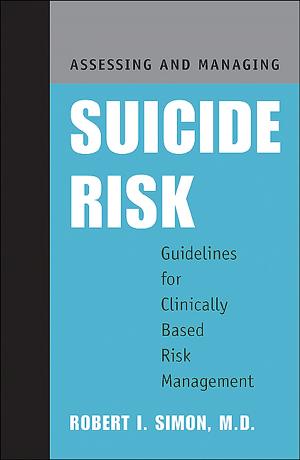Entering Private Practice
A Handbook for Psychiatrists
Nonfiction, Health & Well Being, Medical, Specialties, Psychiatry| Author: | ISBN: | 9781585626748 | |
| Publisher: | American Psychiatric Publishing | Publication: | May 3, 2007 |
| Imprint: | American Psychiatric Association Publishing | Language: | English |
| Author: | |
| ISBN: | 9781585626748 |
| Publisher: | American Psychiatric Publishing |
| Publication: | May 3, 2007 |
| Imprint: | American Psychiatric Association Publishing |
| Language: | English |
Packed with practical advice from experts, and based on the editor's many years of organizing career seminars for psychiatric residents, Entering Private Practice: A Handbook for Psychiatrists offers a comprehensive curricular approach -- highlighted throughout by user-friendly forms, samples, and checklists -- to setting out on a career in private practice.
Entering Private Practice: A Handbook for Psychiatrists details the advantages and disadvantages of private practice and emphasizes that practitioners must love their work and balance it with a successful personal life. Following a systematic, no-nonsense approach to private practice, these distinguished contributors discuss the nuts and bolts of how to, Find and set up a private practice, including the use of technology and the web to minimize administrative overhead and enhance clinical services -- A self-administered form to get started; advice on finance, Internet searches, networking, and interviewing; pros and cons of solo practice, small and large psychiatric groups, and multidisciplinary and multispecialty groups; and step-by step instructions on everything from choosing a location and handling finances and billing to hiring staff and selecting décor Market a practice -- Top 10 tips for both internal marketing (advice for communicating with patients and sample patient and physician surveys), and external marketing (effective outlets, including directory listings, brochures and sample content, direct mail, and the media; includes sample press release and media pitch) Navigate the ins and outs of insurance billing and relationships -- Basic principles and procedures to help practitioners do good work for reasonable pay and help patients get what they most need despite limited resources (including Medicare forms and checklists for understanding insurance benefits and notifying patients about the costs of ancillary services) Relate to primary care physicians -- Integration of care (referral, consultation, and collaboration) to achieve better patient outcomes, including basic principles and skills for effective communication Steer clear of legal pitfalls -- The top 10 legal and risk management areas of concern for psychiatrists, including practice rules, confidentiality, record-keeping, compliance, managed care, and malpractice insurance, among others Avoid or deal with common ethical problems -- Confidentiality, informed consent, boundaries, dealing with industry, continuing education responsibilities, general health care ethics, collaboration, and money issues illustrated by case vignettes
Joining the ranks of essential guides, Entering Private Practice: A Handbook for Psychiatrists is a must-read for any psychiatrist planning a career in or a career change to private practice.
Packed with practical advice from experts, and based on the editor's many years of organizing career seminars for psychiatric residents, Entering Private Practice: A Handbook for Psychiatrists offers a comprehensive curricular approach -- highlighted throughout by user-friendly forms, samples, and checklists -- to setting out on a career in private practice.
Entering Private Practice: A Handbook for Psychiatrists details the advantages and disadvantages of private practice and emphasizes that practitioners must love their work and balance it with a successful personal life. Following a systematic, no-nonsense approach to private practice, these distinguished contributors discuss the nuts and bolts of how to, Find and set up a private practice, including the use of technology and the web to minimize administrative overhead and enhance clinical services -- A self-administered form to get started; advice on finance, Internet searches, networking, and interviewing; pros and cons of solo practice, small and large psychiatric groups, and multidisciplinary and multispecialty groups; and step-by step instructions on everything from choosing a location and handling finances and billing to hiring staff and selecting décor Market a practice -- Top 10 tips for both internal marketing (advice for communicating with patients and sample patient and physician surveys), and external marketing (effective outlets, including directory listings, brochures and sample content, direct mail, and the media; includes sample press release and media pitch) Navigate the ins and outs of insurance billing and relationships -- Basic principles and procedures to help practitioners do good work for reasonable pay and help patients get what they most need despite limited resources (including Medicare forms and checklists for understanding insurance benefits and notifying patients about the costs of ancillary services) Relate to primary care physicians -- Integration of care (referral, consultation, and collaboration) to achieve better patient outcomes, including basic principles and skills for effective communication Steer clear of legal pitfalls -- The top 10 legal and risk management areas of concern for psychiatrists, including practice rules, confidentiality, record-keeping, compliance, managed care, and malpractice insurance, among others Avoid or deal with common ethical problems -- Confidentiality, informed consent, boundaries, dealing with industry, continuing education responsibilities, general health care ethics, collaboration, and money issues illustrated by case vignettes
Joining the ranks of essential guides, Entering Private Practice: A Handbook for Psychiatrists is a must-read for any psychiatrist planning a career in or a career change to private practice.















